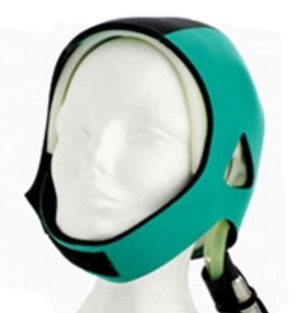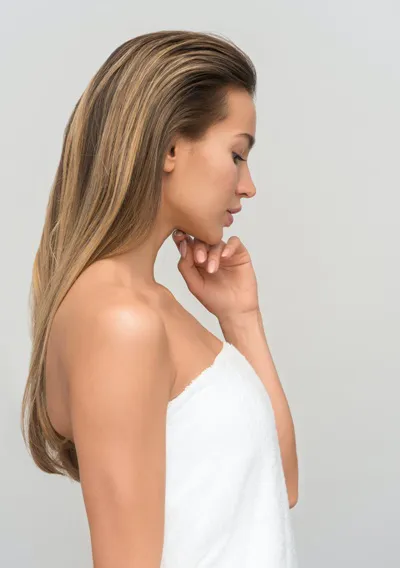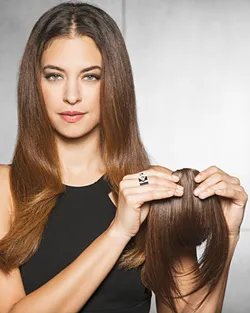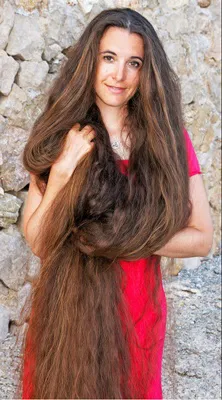
Can Cooling Caps Help Cancer Patients Keep Hair During Chemo?
 Image of DigniCap by Dignitana in Lund, Sweden - All Rights Reserved
Image of DigniCap by Dignitana in Lund, Sweden - All Rights ReservedIn the past, there was no way to prevent hair loss during chemo for most kinds of cancer.
That all changed in the United States when the first patent was filed in 1979, then granted in 1984 for Mark Barron's Chemo Cap.Resizable Gel-Filled Nylon Frozen Pouches Worn Prior To Chemo Treatments
The original chemo caps were gel-filled pouches that were frozen. They were then worn for 15 to 20 minutes prior to chemo treatments.However, studies throughout the 1980s and early 1990s were not sufficiently encouraging. The patent expired in 1998.
Things looked brighter when an analysis of 53 studies from 1995 through 2003 showed an average success rate of 73% with the chemo treatment pouches.
Manual Or Machine-Cooled Cold Caps
The manual cold caps, sometimes referred to as Cold Cap or Cold Capping, became more readily available. Machine-cooled caps, referred to as Scalp Cooling, are also advanced in their features.
Manual and machine-cooled caps can be used interchangeably.
Cold Caps Were Investigated In 2010 By Los Angeles Times
In a special feature in the December 27, 2010 issue of the Los Angeles Times, writer Amber Dance investigated the current research into what is known as scalp cooling caps.
The Times reported that research studies run by UC San Francisco and Wake Forest University in Winston-Salem, N.C., are designed to ultimately lead to Food and Drug Administration (FDA) approval for caps designed to keep hair from shedding during chemo treatments.
Special Cold Skullcaps With A Temperature of 41 Degrees Fahrenheit
Special skullcaps are applied to the head of cancer patients during chemotherapy treatments and are designed to keep poisonous chemotherapy drugs from reaching and impacting the hair follicles.
The special chilling caps have a temperature of 41 degrees Fahrenheit, which is designed to block the absorption of chemo from the hair roots.
The idea of using cold to try and block poisonous chemo from attacking the roots and follicles of hair is not new, but it has never been formally studied with the idea of FDA approval until now.
Can Wearing A Skullcap Stop Hair Loss During Chemo Treatments?
Oncologist and UCSF study leader Hope Rugo believes the prospect of total hair loss is very upsetting to many patients, especially women.
Michelle Melisko is also an oncologist on the UCSF team. She explained that many women make cancer treatment decisions based on the impact on their hair.
Melisko is actively investigating scalp-cooling systems. She understands the fears and anguish women have about losing all of their hair during chemo treatments.
DigniCap Are Made By Dignitana In Lund, Sweden
Cooling caps known as the DigniCap are made by Dignitana in Lund, Sweden. More than 4,000 people undergoing chemo have tested the DigniCaps.
The good news? According to Dignitana's Chief Executive Office (CEO), more than 85% of those using the caps have reported keeping their strand intact during treatment.
Testing The DigniCap And Penguin Cap
UCSF study leader Rugo is examining the DigniCap, and Melisko is studying another cooling cap known as the Penguin Cold Cap.
The DigniCap cycles coolant through special channels built into a snug-fitting silicone-style helmet.
The DigniCap is attached to a rolling control unit. The cap is worn 20 minutes before chemo, throughout the administration of the chemo, and then for half an hour or longer after the chemo is administered.
Results Of Cooling Down The Scalp
The result of cooling down the scalp means that the blood flows sluggishly to the scalp and limits the delivery of chemotherapy to the hair roots and follicles.
This means the hair follicles process less of the chemo. Chemo is designed to attack cells that are rapidly growing and reproducing.
Some doctors worry that the cooling caps will actually cause cancer to eventually attack the tissues connected to the hair follicles.
Their concerns are related to the idea that fast-growing cancer cells are known to attack hair follicles.
DigniCap Is Hoping For FDA Approval
Dignitana hopes to gain FDA approval for its cooling caps sometime in 2012.
A current cooling cap study is now underway with 20 early-stage breast cancer patients. The goal is to determine if the caps are a workable option.
Also, to test whether or not the patients will consistently stick with wearing the caps.
If the current study is successful, another trial with 100 people will be undertaken to determine the results.
Besides the DigniCap by Dignitana, there are two other cooling cap systems known as the Penguin Cold Cap and Paxman.Summary - The Cold Caps Don't Work For All Chemotherapy Patients
Although there have been some patients who have experienced great results by using a cold cap during chemotherapy, it doesn't work for everyone all the time.There are also known side effects. Always do your own research and talk with your oncologist to see if you are a good candidate for a cold cap.
More Information
Please follow me on Twitter at: http://Twitter.com/HairBoutique. I look forward to meeting new people from all walks of Twitter and learning from their Tweets. Visit us at Hairboutique.com located at: http://www.HairBoutique.com, on Facebook, MySpace and YouTube.
Thank you for visiting us at The HairBoutique Blog and for leaving your comments. They are very much appreciated. We apologize in advance but must remove any direct advertisements or solicitations.
Social Media Network Information
Please follow us on Twitter at: https://Twitter.com/HairBoutique. I look forward to meeting new people from all walks of Twitter and learning from their Tweets.
















